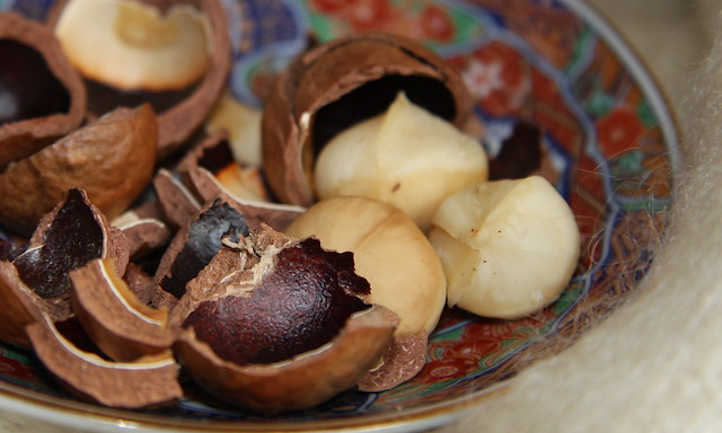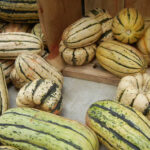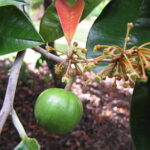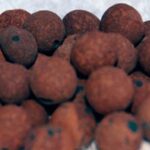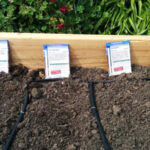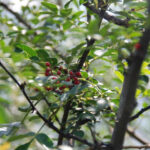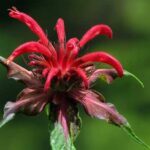When we think of Hawaii, we think of gorgeous beaches, warm sand, hula dancers and flower leis. And some of us also think about the macadamia nut tree!
This lovely, graceful evergreen produces an oily and rich nut that’s been used in tropical climates as a food for generations. But what most of us don’t realize is that they’re more Australian than Hawaiian. Maybe we should be saying “g’day, mate” when we crack into one of these fatty nuggets of deliciousness… well, if it didn’t take so much work to crack into them.
A tough nut to crack, the macadamia takes almost 300lbs of pressure per square inch to break the shell. But we love them, hard to crack or not. They’re used in a variety of dishes, they’re coated in chocolate, and they’re viewed as a tropical delicacy, no matter where they originate.
So let’s discuss all things about the magnificent macadamia nut tree, and how you too can produce these delicious tidbits of nutmeat!
Get A Macadamia Nut Tree
Quick Care Guide
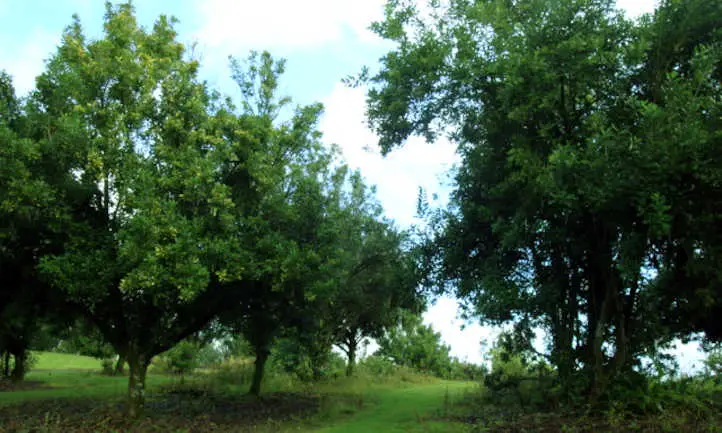
| Common Name(s) | Macadamia, Queensland nut, bush nut, maroochi nut, bauple nut, Hawaii nut |
| Scientific Name | Macadamia integrifolia, Macadamia ternifolia, Macadamia tetraphylla |
| Months of Harvest | September through April |
| Light | Full sun, but can tolerate partial sun in very hot climates |
| Water: | Consistent even watering, more when tree is very young |
| Soil | Rich, fertile loamy soil – slightly acidic |
| Fertilizer | Balanced fertilizer twice a year, slightly lower in nitrogen if possible |
| Pests | Thrips, mites, scale insects, macadamia nut borer, stink bug |
| Diseases | Anthracnose, canker |
All About Macadamia Nuts
Although the macadamia tree is a popular commercial crop in Hawaii, it’s actually native to northeastern Australia. The tree is also grown in Africa, Asia, and Latin America, as well as in the warm climates of Florida and California in the United States.
The macadamia tree is part of the Protaceae family. Although a slow grower, once the tree begins to bear fruit it continues to produce for years to come.
Its foliage is a rich, deep green hue, with oblong blunt-tipped leaves that have spiny, serrated margins. These leaves develop in groupings of three to six, but almost never develop singly. When it flowers, its blossoms grow on long spikes called racemes, each with between a hundred and a hundred and fifty flowers on it. The average tree produces about 2500 flowers in a given flowering season.
Trees take seven to ten years before they start to produce harvestable nuts. The tree will grow to a height of between 7-40 feet, although ones used in commercial growing are usually kept short for ease of harvest.
Its nuts develop inside a round and hard woody shell. This shell is about five times harder than a hazelnut to crack, and has a whole host of uses on its own.
Shells are often burned at extremely high temperatures to create activated carbon for uses like water filtration. They can be ground to produce a fertilizer for the tree itself, or used as a mulch. They’re also used in pit barbecuing, as the burning shells don’t add any unpleasant flavors to the food. On occasion they’re used to create a form of particle board which is particularly resistant to humidity, preventing it from warping. And of course, they make excellent biochar.
Inside these shells lie the true feast. The macadamia nut itself is nearly 80% oil, making it an extremely high-caloric, flavorful nut. There’s usually only one nut per shell, although occasionally two may form. These delicious nuts are high in dietary fiber, monounsaturated fats, and are considered a low glycemic index food.
Other names for the macadamia nut include bush nut, Queensland nut, Hawaii nut, bauple nut, or maroochi nut.
Types of Macadamia
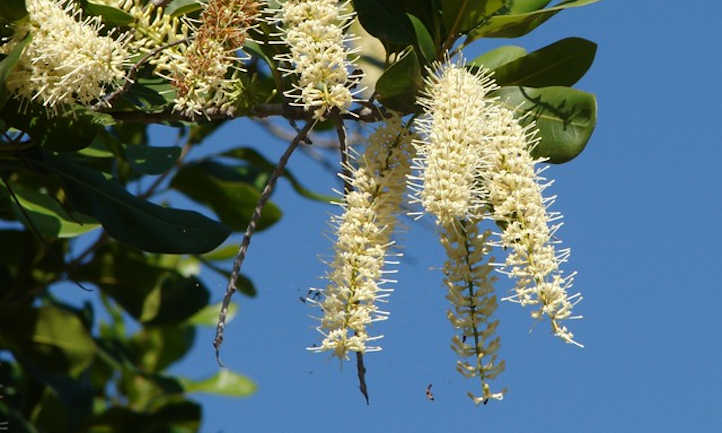
There are three types of macadamia nut trees that produce edible nuts. These are Macadamia ternifolia, Macadamia integrifolia, and Macadamia tetraphylla.
- Macadamia integrifolia is native to Queensland, Australia. It has white to pink flowers with woody, rounded fruits. The leaves are fairly long with toothed margins.
- Macadamia ternifolia is a smaller, multi-stemmed tree that grows up to 26 feet tall. This one is also native to Queensland, Australia, with leaves that are dull from above and pale from below. It has pink petals that are 6-8.5 mm long.
- Macadamia tetraphylla is a tough but small tree. Native to Australia, the tree is typically found in rainforests or along borders and creeks where the soil is most fertile.
A fourth species of macadamia tree, Macadamia jansenii, is also found in the wild in Australia. However, its nuts are poisonous and thus it’s usually not cultivated.
There are many cultivars of macadamia nuts out there, but here’s a few of the most common.
- Beaumont is a hybrid cultivar of Macadamia integrifolia and M. tetraphylla. It has bright pink blooms that appear on long racemes with vibrant, reddish leaves. This cultivar also has grape-like clusters that can end up snapping branchlets. The macadamia nuts don’t drop once they’re ripe, but this cultivar produces nuts that are easier to crack.
- Maroochy is purely an M.tetraphylla cultivar, which is produced for its rich flavor, healthy crop yield, and easy pollination of the ‘Beaumont’.
- Renown is a hybrid cultivar of M. integrifolia and M. tetraphylla. As a spreading macadamia tree, it bears the highest yields. The nuts, however, don’t carry much flavor and are very thick-shelled.
- Nelmac II is native to South Africa and a hybrid cultivar of M. integrifolia and M. tetraphylla. This one has a sweeter flavor. Many people like to enjoy the uncooked seeds for their sweetness. It’s known for its pollination of “Beaumont’ and yields delicious nuts.
Planting
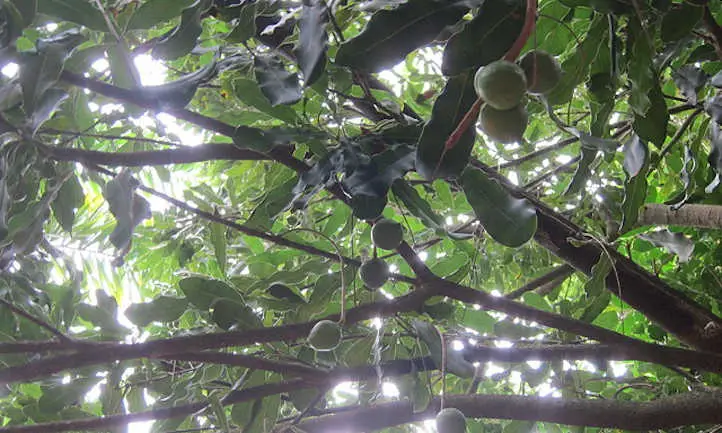
Planting macadamia nuts is relatively easy. But it’ll take them years to grow and develop before they produce tasty treats, so here’s how to care for them both while they’re developing and after!
When to Plant
Macadamia seeds should be planted indoors during the late fall to early winter. This allows them plenty of time to germinate before the spring. As the spring weather warms, new seedlings can be hardened off to outdoor temperatures gradually, but care should be taken to avoid exposing them to cold as they’re susceptible while young.
Similarly, young transplants can be planted out during the spring, but after the last chance of frost has already gone. Older trees can tolerate some cold and excess heat, but young ones are at risk of frost damage or leaf scorch.
Where to Plant
Select a location that receives full sun year-round, but which is protected from harsh wind. While a mature macadamia can be a very effective windbreak, its flowers are at risk of damage from high winds. If you’re growing them for their nuts, you don’t want those long flower racemes damaged when they appear!
Container-grown macadamias will need space for healthy root development. Be sure that the size of the pot corresponds to the height and age of the tree for good growth. For younger trees, try the 5-gallon or 10-gallon Air Pots we stock in our store.
How to Plant
If you’re planting in the ground, loosen up the soil in at least a 3-4 foot circle around the planting area, and at least 3’ deep. Be sure your soil drains excess water well, and amend if necessary to improve drainage.
Most macadamia integrifolia trees will arrive in a pot when purchased, and any plants you’ve started from seed will also be potted. Carefully remove your tree from its pot, checking the roots to make sure they’re not circling. If they are, use your fingers to lightly open up the root mass.
Plant your trees at the same depth at which they were planted in the container. Do not plant them deeper than they previously were, as this can cause trunk rot. Your tree will be growing in its location for quite a while, so you want to make sure it remains healthy.
Plants being placed in containers should have a large enough container to handle their root ball. Open up the roots again by hand and examine the size, then select a container that suits the size of your tree at that time. You may need to repot it in the future to give it more space.
Macadamia Care
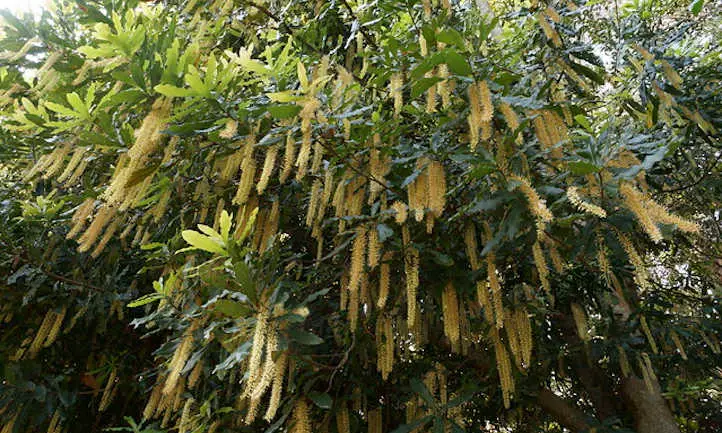
Growing macadamia nuts doesn’t require tremendous amounts of time and effort, but there is annual maintenance to be done. Ensuring the continued health of your tree is essential. Let’s go over some care tips that will help.
Sun & Temperature
When growing macadamia trees, the ideal growing zones are between 9-11. This provides the right annual climate and the least risk of frost or freeze conditions for your tree. They can be grown outside of those regions, but may not perform as well.
Full sun conditions are ideal for your tree. If you have scorching summers, partial shade may work too as long as the tree has a good amount of morning sun.
While the ideal growing temperature for your plants is between 65-85 degrees, it can tolerate periods of time above or below that.
Temperatures that are consistently in excess of 95 degrees can reduce your harvest of macadamia nuts, as the tree may become heat-stressed. An established tree planted in the soil can handle hotter climates better as its roots go deeper, but container plants don’t have that option, so be sure to keep any container-grown trees hydrated.
When the temperature dips below 45, your tree may start to suffer. Offer protection by wrapping the trunk in a blanket or a commercial tree bag. Trees less than 3 years old are at the most risk, and should be completely bagged, although care should be given to try to keep the bag off the foliage by using stakes as added support for the bag.
Water & Humidity
Consistent and regular irrigation is important for growing macadamia nuts. This is especially important during certain stages of the development cycle. Once the nut begins to form, water is needed to ensure the eventual nut is plump and flavorful. Too little water during this period will result in inferior nut-set.
A vegetative growth period occurs during the late spring and through the summer months. During this period, water is also necessary to ensure that the plant has enough moisture to develop foliage. Younger trees require more water than mature ones, as they’re growing at a much higher rate.
Try to water early in the day when possible. For the first couple years, a five-gallon bucket of water applied slowly around the root area every couple days during the hot months is a good amount. Drip or soaker irrigation is also an option, as long as you make sure the tree gets consistent and even moisture.
Soil
Macadamia nut trees grow best in deep, loamy, well-drained soils. They also prefer a slightly acidic pH of 5.0-6.5. While they will grow in other forms of soil, they tend to be less vigorous. Soil that is high in natural salts may negatively impact the tree’s growth as well.
Trees will also appreciate mulching as that helps prevent moisture loss. Mulching can greatly help with that as well as prevent competitive weeds. The macadamia shells themselves can be a very effective mulch in a 3-4” deep layer. Avoid placing the mulch directly against the trunk, leaving at least a few-inch gap around the trunk to protect it.
Fertilizing
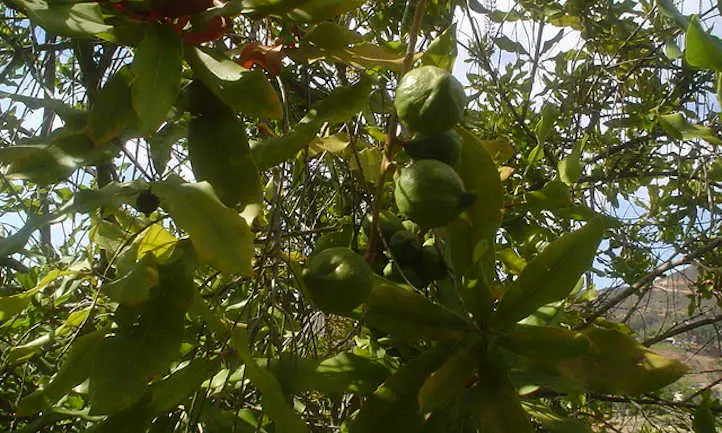
Slow growers, you’ll find your macadamia tree to be fairly non-demanding in terms of fertilizer. A citrus mix or fish emulsion that contains no more than 1% nitrogen can be applied twice a year. Fruit tree formulas may also work, provided that they’re in the right nitrogen range.
Aged manure or compost can be applied in lieu of at least one of the annual fertilizer doses, as long as it is nutrient-dense enough.
Apply fertilizer early in spring when new growth begins, and then again mid-summer. Do not fertilize in the fall or winter months.
Pruning
Prune the tree regularly by removing unhealthy or dead branches and ones that are growing inwards. This trimming will help with airflow, prevent root rot, maintain the tree at the height you desire, and give your tree a beautiful shape.
Pruning can be done anytime, but the best time is in May or June after harvesting. Use either sterilized pruning shears or sterile loppers.
Propagation
Macadamias are easily propagated from seed, but it can take 8-12 years before the tree produces a crop. In addition, the trees may not be as heavy producers as their parent tree was, depending on the cultivar being grown.
A more consistent way of propagation is grafting, but macadamia nut trees are often difficult to graft. A simple whip graft technique is most common, but side grafts are also effective. As the tree produces hard wood, grafting macadamias is best left to nursery personnel.
Softwood cuttings can be rooted with the application of rooting hormone. This is more viable for home growers.
Harvesting & Storing

So you’re growing macadamia nuts… how do you know when they have started to produce nuts that are ripe? More importantly, when and how should you harvest and store your hard-earned macadamias? Let’s talk about that.
Harvesting
Mature macadamia nuts will drop from late fall through the early spring. For a few cultivars, you may need to nudge the nuts with a produce basket to cause them to fall. Shaking can cause unripe nuts to fall as well, so try to avoid shaking the tree branches to encourage their descent.
Lay a tarp at the base of the tree to catch nuts, or go pick them up off the ground when they’ve fallen. A daily trip out to pick up mature macadamias should net you a considerable supply, as the average tree can produce between 30-50 pounds of nuts at 10 years of age.
The outer husk that surrounds the shell should dry out and turn brown prior to its fall to the ground. Remove the outer husk, leaving the shell and its nut in place, and allow them to dry out in a dry location away from sunlight for 2-3 weeks. Once you have air-dried them, place your in-shell nuts in a dehydrator or oven at 100-115 degrees Fahrenheit for 12 hours, stirring occasionally and being careful to prevent them from cooking.
Once fully dried in this manner, the hard shells can be cracked to extract the nutmeat.
Storing
Once fully dry, your ripe macadamias can be roasted or left raw. Macadamias can be stored in airtight containers at temperatures between 40-65 degrees or frozen.
To roast your nuts, place shelled nuts on a tray, being sure to spread them out. Avoid stacking them more than 2 deep. Roast in the oven for 40 to 50 minutes, stirring them occasionally. They can then be salted or not (as desired) before storing. The nuts produce enough natural oils that you should not need to use oil for roasting.
Troubleshooting
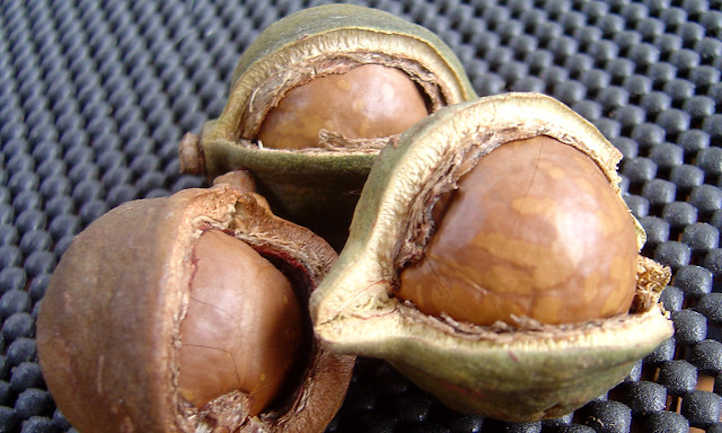
As beautiful as macadamia trees are, they’re still susceptible to pests and diseases. Here’s how to keep your plants free of most pests and diseases, as well as most other macadamia issues!
Growing Problems
A heatwave at the wrong time can reduce the eventual harvest. This is especially true if it occurs during flowering. Similarly, high wind can reduce harvests if it hits when flowering is ongoing. While you can’t stop high heat or high wind, offering shelter from the wind is an option when first planting. Extra watering during periods of high heat may slow down the nut decline.
Avoid over-watering your trees. They do like water, but if the ground is muddy or overly-wet, it can lead to root rot conditions.
Pests
In the United States, very few pests are likely on macadamia. Those that do occur are more of the nuisance category.
Thrips can inhabit the flower-bedecked racemes of your plant. These annoying little pests feast on plant saps and can reduce the harvest. They can continue to live on the husk, feeding on that as well. Applications of a horticultural oil should reduce their numbers.
Mites can also inhabit the husk around your nut shells, and they will eat it and leave the nut open to environmental risks. Broad mites can also feed on the flowers, reducing nut set. Like with thrips, horticultural oil reduces their numbers.
Scale insects can build up on stems. Like thrips, these are sap-suckers, but they rarely cause severe damage if they’re only on a few leaves. You can simply trim infested leaves away. Horticultural oil will also reduce or slow their development.
The macadamia nut borer is a moth larvae that can cause serious havoc on immature nuts before their hard shells form. These caterpillars munch on both the foliage and the fruit itself, and can cause serious damage over time. Applications of bacillus thurigiensis will eliminate larvae.
Finally, the stink bug is a common pest… but also a boon, if it’s the right variety. Some forms of stink bug will feed on the other pests but not the tree. The risk comes in if your stink bugs are more interested in the macadamia itself. If you begin to see yellowing spots or chewed foliage and notice flat, beetle-like winged insects, that’s your culprit. Neem oil is effective against them early on, and horticultural oil also can be effective if less so than neem.
Diseases
Anthracnose can infect leaves and nuts in humid areas. This fungal disease can be treated by spraying down the foliage and forming nut pods with a liquid copper fungicide. If only a few leaves show signs of anthracnose, you may be able to remove it simply with a light pruning.
If the trunk is damaged by a weed whacker or other injury, it can develop cankering. These cankers are generally fairly harmless, but certain types can cause trunk rot. Avoid damaging the trunk by keeping weeds and grass away and mulching thickly under the tree’s canopy to reduce further weed growth.
Frequently Asked Questions
Q: How long does it take to grow a macadamia nut tree?
A: If starting from seed, it can take 8-12 years before it consistently produces.
Q: Do you need two macadamia nut trees?
A: For cross-pollination, you will need at least two trees. Most varieties of macadamia are not self-pollinating and can’t produce fruit without a nearby pollinator.
Q: Are macadamia nuts toxic to dogs?
A: Yes, they are. Ingestion of more than 2g of macadamia nuts per kilogram of body weight can cause a wide host of symptoms, including vomiting, weakness, fever, trembling or depression.

